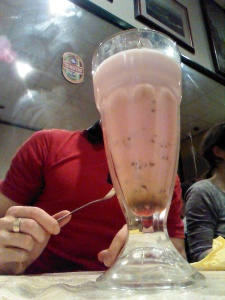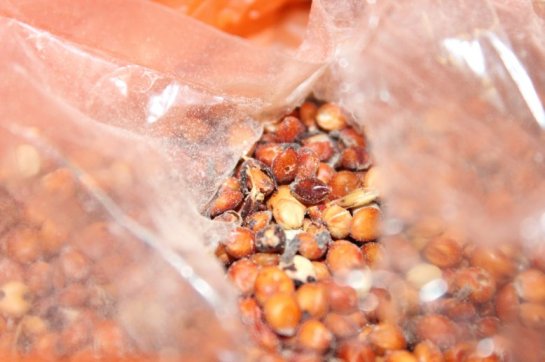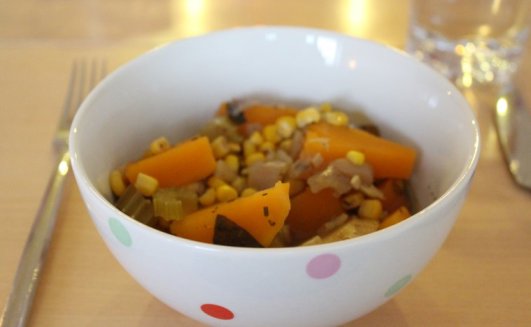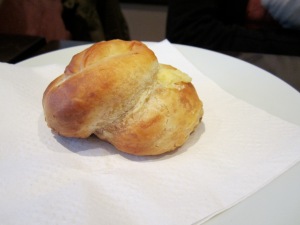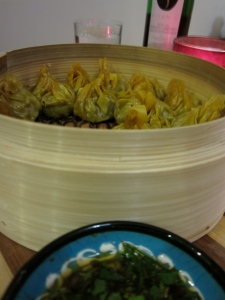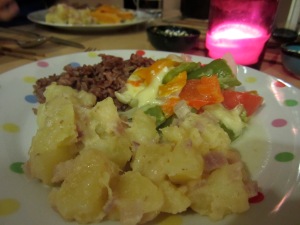Steve’s house, Streatham
13 May 2014
I’m afraid we don’t remember much about this meal – even the photos don’t look familiar. The starter was probably by Sophie, and was a Burundian bean soup, which looked like this and was presumably hearty.
Steve’s main course was mackerel with plantains and kidney beans. I think this must have been made up, based on the general information about Burundi food made on this page: http://globaltableadventure.com/2010/08/10/about-the-food-of-burundi/
Finally, for dessert, Joe made Bananas Burundi – banana in orange syrup with banana crisps. This was also a bit suspect, the only source being this page http://recipes.wikia.com/wiki/Category:Burundian_Desserts, which claims “The bananas Burundi is made with cinnamon, orange juice and flavored with Curacao or apricot, all garnished with sweetened sour cream and brown sugar.” Joe says “despite appearing nowhere else on the internet, that’s good enough for me. We all know there are no real Burundian desserts, and this is no more spurious than the “Banana and Date mix” that appears everywhere else.”
Scores
Food 3/5
Recipes
Burundian Bean Soup
- 1/2 tin lima beans (I used black eyed beans)
- 1/2 tin white beans
- 1/2 tin pink or red beans
- Stock to cover ingredients
- 1 onion, chopped
- 1 green pepper, chopped
- 1/4 tsp red chilli flakes
- 4 sticks celery, chopped
- Handful parsley, chopped
- Handful of basil, chopped
- 2/3 tbsp ground cumin
- 1 tsp salt
- Handful unsalted peanuts ground to a powder
Mackerel with beans and plantain
- 500g kidney beans
- 6 plantains, sliced
- palm oil / groundnut oil
- 1 onion, chopped
- salt & pepper
- 3 whole mackerel
- White rice
Heat oven to 200°C. Fry onion in oil. Add beans, plantains, onion and seasoning, plus 50ml water and bring to a boil. Reduce heat and simmer for 30 mins.
Bake mackerel in oven for 20 mins. Serve on top of plantain/bean mix and rice.
Bananas Burundi
(Serves 3)
- Bananas x 3
- Stick cinnamon
- Fresh orange juice 150ml
- Brown sugar 50ml
- Cointreau or Curacao or Grand Marnier, measure
- 4 fresh apricots (or 6 dried)
- Sour cream
- Icing sugar tsp
- Sweet plantain chips
Stone the apricots and cut into quarters.
Put the orange juice, cinnamon and sugar into a pan and bring to the boil. Seethe, stirring continuously, until it thickens into a light syrup. Then stir in the Cointreau. If it gets too thick, add a little water.
Stir icing sugar into sour cream.
Slice the bananas lengthways, scatter apricot pieces on top, pour the syrup over them, and serve with sour cream on the side. Sprinkle plantain chips on top.





